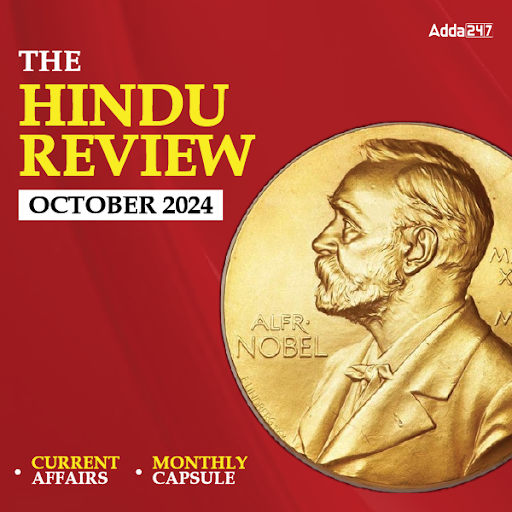Directions (1-3): Read the following information carefully and answer the questions given below:
A word and number arrangement machine when given an input line of words and numbers rearranges them following a particular rule. Following is an illustration of input and steps of rearrangement.
Input: tree cut 92 51 food 17 garden 32
Step I: cut tree 92 51 food 17 garden 32
Step II: cut food tree 92 51 17 garden 32
Step III: cut food 92 tree 51 17 garden 32
Step IV: cut food 92 51 tree 17 garden 32
Step V: cut food 92 51 garden tree 17 32
Step VI: cut food 92 51 garden tree 32 17
And Step VI is the last step of the input.
As per the rules followed in the above steps, find out the answer to each of the questions given below:
Q1. Step IV of an input is: “earn more 82 63 12 31 quite new”. Which of the following will definitely be Step II of the output?
(a) earn more 12 63 82 31 quite new
(b) earn more new 82 63 12 31 quite
(c) earn more quite new 82 12 63 31
(d) Cannot be determined
(e) None of these
Q2. Input: “bring home 42 73 15 goal 32 type”. Which of the following steps will be the last?
(a) V
(b) VI
(c) IV
(d) VII
(e) None of these
Q3. Input: “bench 47 63 advance 13 29 again between”. Which of the following is the step III of the output?
(a) advance again 63 47 bench 13 29 between
(b) advance again 63 47 bench between 13 29
(c) advance again 63 47 bench between 29 13
(d) Cannot be determined
(e) None of these
Q4. Which of the following groups of alphabets should replace the blank spaces so that the group of alphabets, follow a logical pattern from the preceding and the following group of alphabets?
a b _ y a b c_x w a b c d e v_
(a) z, d, u
(b) d, x, u
(c) c, d, u
(d) z, y, w
(e) c, d, w
Q5. Four of the following five are alike in a certain way and so form a group. Which is the one that does not belong to that group?
(a) Lens
(b) Shutter
(c) Film
(d) Camera
(e) Zoom
Directions (6-10): Study the following information to answer the given questions:
In certain code ‘always to be right’ is written as ‘4 9 3 2,’ ‘right is also just’ is written as ‘9 7 6 5’, ‘come to terms’ is written as ‘1 3 8’, ‘terms are just’ is written as ‘0 1 6’ and ‘always is’ is written as ‘7 4’.
Q6. Which of the following is the code for ‘come’?
(a) 0
(b) 8
(c) 1
(d) 3
(e) Either 1 or 8
Q7. Which of the following can be coded as ‘8 6 3 1 5’?
(a) to be are just terms
(b) right to come are terms
(c) always also to be just
(d) be right also is terms
(e) also come to just terms
Q8. Which of the following represents, ‘always be right terms’?
(a) 8 4 1 3
(b) 2 4 1 9
(c) 4 3 8 9
(d) 1 2 5 0
(e) 9 0 4 2
Q9. Which of the following is the code for ‘right’?
(a) 9
(b) 7
(c) 6
(d) Either 9 or 5
(e) 5
Q10. What does ‘6’ represent in this code?
(a) terms
(b) also
(c) are
(d) is
(e) just
Directions (11-15): Study the following information to answer the given questions:
Twelve people are sitting in two parallel rows containing six people each, in such a way that there is an equal distance between adjacent persons. In row l, P, Q, R, S, T and V are seated and all of them are facing south. In row 2, A, B, C, D, E and F are seated and all of them are facing north. Therefore, in the given seating arrangement each member seated in a row faces another member of the other row.
A sits third to right of D. Neither A nor D sits at extreme ends. T faces D. V does not face A and V does not sit at any of the extreme ends. V is not an immediate neighbour of T. B sits at one of the extreme ends. Only two people sit between B and E. E does not face V. Two persons sit between R and Q. R is not an immediate neighbour of T. C does not face V. P is not an immediate neighbour of R.
Q11. Who amongst the following sit at extreme ends of the rows?
(a) B, E
(b) S, T
(c) P, R
(d) B, F
(e) None of these
Q12. Who amongst the following faces A?
(a) R
(b) T
(c) P
(d) Q
(e) S
Q13. How many persons are seated between T and S?
(a) One
(b) Two
(c) Three
(d) Four
(e) None.
Q14. P is related to V in the same way as C is related to F. Which of the following is E related to, following the same pattern?
(a) B
(b) D
(c) C
(d) A
(e) None of these.
Q15. Which of the following is true regarding F?
(a) F sits second to right of C.
(b) F is not an immediate neighbour of A.
(c) F sits third to left of D.
(d) F sits at one of the extreme ends of the line.
(e) F faces V.





 General Awareness Quiz for Bank Mains Ex...
General Awareness Quiz for Bank Mains Ex...
 English Language Quiz For Bank Foundatio...
English Language Quiz For Bank Foundatio...
 Reasoning Quiz For Bank Foundation 2024 ...
Reasoning Quiz For Bank Foundation 2024 ...




